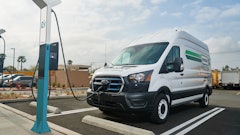
The benefits associated with a first-rate driver safety program are in many ways intangible. Your employees are your most important asset, and it is hard to put a price on their safety and the safety of those who share the road with them. In other ways, the savings afforded by an effective safety program can be profound. Insurance premiums go down as reported incidents decrease, wear and tear accumulates more slowly as aggressive driving is eliminated, and fuel efficiency increases as drivers stay within posted speeds.
Driver safety is something that many companies do well, but very few do great. While many drivers are put through educational sessions on road awareness and defensive driving habits, most businesses miss the mark when it comes to creating a comprehensive program that consistently reinforces good driving behavior. That’s not to say that most businesses are neglecting the safety of their workers. The reality is that technology has advanced so quickly over the last few years that many managers are simply unaware of their options when it comes to monitoring and influencing safe driving practices.
Many companies make sure that new drivers are thoroughly trained on defensive driving best practices, and many do a good job of scheduling regular refreshment sessions further down the road. Unfortunately, relying solely on regular training still may not be enough, and the only way many businesses find out is through an accident report.
Like so much else, a strong driver safety program relies on good, hard data. Without information about how your drivers are behaving on the road, your safety program is like a highway with speed limits but no state patrol to enforce them. Even worse, without good data you are limited to reactive measures after an accident or event happens, rather than taking proactive measures to ensure that the accident never happens in the first place.
No fleet manager can sit shotgun with each of their drivers in the field to make sure they are in compliance with company standards. Luckily, the development of telematics solutions into complex management tools means they don’t have to. Depending on the solution, fleet managers can quickly and easily access reports on things like speeding, cornering, rapid acceleration, and harsh braking for their entire fleet. Using this information, managers gain immediate insight on which drivers may be in need of further coaching.
Another key to instilling a safety program that can gain real traction with your employees is in how you present it. If your program only focuses on the negative, and simply doles out punishments for traffic citations or accidents, your employees will only see the program in a negative light. On the other hand, if you have information on which drivers are doing things right, rather than which drivers aren’t getting caught, you can set up a rewards program that positively enforces good behavior.
Sure-Fire Inc., a Wisconsin company that offers HVAC and electrical services, offers an interesting example of how data driven safety programs can affect real change. When Sure Fire implemented a telematics solution, their Risk Manager, Casey Malesevich, seized upon the idea of turning safe driving into a competition. Using built in reports, Malesevich created a leaderboard that tracked driver performance and made them visible across his entire employee base. At the end of every quarter, the top performers were rewarded. Malesevich saw immediate results, reporting that “following the speed limit and not idling has become an intense competition.” As a company, Sure-Fire enjoyed a 30 percent decrease in speeding violations 10 mph over the posted limit, and a 45 percent decrease in violations 15 mph over the posted limit.
Speeding is only one of many risk factors that contribute to the potential for an accident. Telematics devices can track and report on other common behaviors that indicate aggressive driving, such as hard cornering, quick acceleration, and hard braking. Using a combination of these factors, a platform can automatically generate a scorecard for each driver. By posting rankings in a way similar to the way Sure Fire Inc. did, a fleet manager makes the process more transparent and easier for drivers to accept. Knowing that their performance is being tracked and that they are on a level playing field with their peers goes a long way towards getting drivers to truly accept a safety program.
For companies that want to take further measures, there are a wide variety of options available. Texting while driving is roughly comparable to driving at .08 BAC, the legal alcohol limit. In fact, according to an NHTSA and Virginia Tech, driver distractions like texting are a factor in 93 percent of rear-end collisions. Some telematics solutions include texting blockers, and for those that do not there are aftermarket options from companies like CellBlocker. By removing the temptation of texting, you assure your drivers will stick to company policy.
Drivers are still only human. Built in vehicle offerings like collision avoidance and lane assist systems help to take some of the human element out of your supply chain. Critics of these systems claim that instead of making roads safer they merely make drivers lazier, and the return on investment may not cover their cost. While that may be true in certain instances, they have the potential to act as a strong last line of defense when implemented into a well thought out safety program that focuses first and foremost on driver behavior.
Despite all of these high tech tools, accidents are going to happen. When they do, your company will have to provide answers concerning liability and adherence to a safety policy. If you can provide documentation of a robust safety program that uses data from driver behavior to determine whether a driver needs extra training, it will go a long way in court. Staying proactive is the key to implementing a successful driver safety program. Don’t wait for the next accident. Weigh your options and push for safety before something happens. The long term benefits are worth the investment.


























